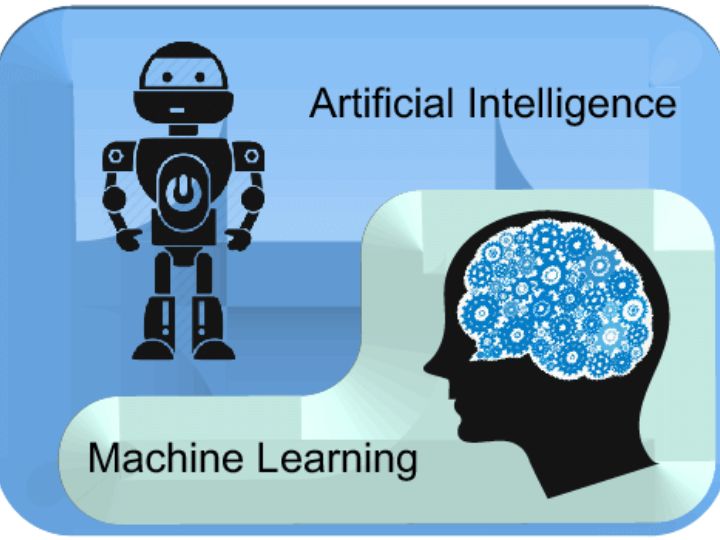Examining the Interrelationship between Machine Learning and Artificial Intelligence

Machine learning is merely one component of what a system needs becoming an AI. The machine learning component of the image allows an AI to do the following tasks:
- Be able to adapt to new situations that the original creator did not anticipate
- Recognize patterns in a wide range of information types
- Develop new habits based on previously identified patterns.
- Base your choices on the successes and failures of these actions.
Machine learning revolves on the use of techniques to transform information. A machine learning session must utilize an acceptable algorithm to obtain the intended output in order to be effective. Furthermore, the information must be amenable to examination using the specified technique, otherwise it will need extensive preparations by researchers. To accurately imitate the mental process, AI incorporates several different disciplines. AI often involves, in additional to machine learning.
- Natural language processing (NLP):The act of accepting linguistic input & converting it into a format that a computer can understand.
- Natural language comprehension: The process of interpreting language in ability to act on the information it conveys.
- Understanding portrayal: The capacity to store understanding in a way that allows for quick accessibility.
- Planning: The capacity to utilize saved data to make inferences in near real time (nearly at the instant it occurs, but with a minor delay, although sometimes small that a person would miss it, but a computer would).
- Robotics:The capacity to physically respond to a customer’s query
Understanding the Importance of Algorithms in Computer Science
Machine learning is a field in which algorithms are at the heart of anything. A problem-solving algorithm is a process or formula that is used to address a particular issue. Exactly the sort algorithm required depends on the problem area, but the fundamental assumption is always the same — to solve some form of difficulty, including such driving a vehicle or playing dominoes — regardless of the area. In the first scenario, the issues are numerous and complicated, but the final challenge is to transport a passenger from one location to another without wrecking the vehicle in the process. In the same way, the purpose of dominoes is to win as much as possible. The algorithms discussed in further depth in the following sections.
Understanding What Algorithms Are and What They Do?
An algorithm may be thought of as a type of container. It gives a box in which to store a solution for solving a certain kind of issue in a specific situation. A succession of well-defined stages is followed by information processing by computers. It is not necessary for the states to be predictable, but the states must be specified, nevertheless. The purpose is to provide an output that provides a solution to a challenge. In certain circumstances, the algorithm gets inputs that aid in the definition of the output, but the algorithm’s primary attention is always on the final result.
In the well and formal vocabulary must be used to represent the transition process between states in order for the computer to grasp what is being done. When analyzing information and addressing an issue, the algorithms define, refines, and performs a function that is used to accomplish the task. The functions are always tailored to the particular kind of issue that the algorithm is attempting to solve.
Taking into Account the Five Major Methods
Every tribe, as previously explained, has a distinctive approach or strategy for addressing issues, resulting in algorithms that are distinct from the other tribes’ algorithms. Integrating these algorithms should ultimately result in the creation of a master algorithm that will be capable of solving any issue that is presented. The five primary algorithmic approaches are discussed in detail in the following parts of this document.
Neurons in the brain are used to represent the connections between them.
The assess the influence are the most well-known of the five groups. This group attempts to replicate brain processes using silicon rather than neurons. Fundamentally, every neuron (made as an algorithm that mimics the real-world equivalent) solves a little bit of the issue, and the employment of several neurons in parallel fixes the issue overall. Backpropagation, or backward transmission of mistakes, aims to find the circumstances under which mistakes are eliminated from networks designed to simulate human neurons by varying the network’s weighting (how often a given input factors into the outcome) and biased (which characteristics are picked).
The idea is to keep adjusting the weighting or biased until the actual output equals the intended output. The artificial neuron activates and sends its answer onto another neuron in line. The answer generated by a single neuron is merely a portion of the total solution. Every neuron sends data to the following neuron in line, and so on until the collection of neurons produces a culminating output.
Interpretation using Bayesian Methods
To tackle issues, Bayesians use a variety of statistical techniques. Given that statistical approaches may provide more than one seemingly right result, selecting a function is becoming a matter of assessing which value has the best chance of succeeding. For instance, when utilizing these approaches, you may receive a collection of complaints as input and determine the likelihood that the symptoms would result in a certain illness as output. Specific that numerous illnesses share the very same characteristics, the probability is significant since a person will observe some cases when a lower probability response is the right outcome for a given condition.
Finally, this tribe believes that you should never entirely accept any hypothesis (a result that someone has given you) without first seeing the data that verifies it (the input the other person used to make the hypothesis). The proof is analyzed to establish or deny the theory that it promotes. As a result, unless all of the signs are tested, it is impossible to establish which illness somebody has. The spam filter is one of this tribe’s most wellknown products.
Symbolic Inference
Induction is another name for inverse deduction. In symbolic thinking, deduction broadens the scope of human understanding, while introduction increases the degree of human understanding. Induction often creates new topics of investigation, while deduction investigates such fields. The most significant aspect, meanwhile, is that induction is the scientific component of this form of reasoning, while deductions are the engineering component. The two tactics operate together to solve issues by first creating an area of prospective investigation to fix the issues and then investigating that field to see whether it does, in fact, fix the issues. As an instance, deduction might state that if a tree is green & green trees are living, then the tree must be living. When considering induction, you could claim that the tree is green and moreover alive; so, green trees are alive. Considering a knowing input & outcome, induction answers the question of what information is lacking.
Analogy-Based Learning Systems
Kernel machines are used by analogizes to identify trends in information. You can solve an issue by identifying the structure of one set of inputs & matching it to the structure of a known output. The idea is to find the best solution using similarities. This was the type of reasoning that concludes that since a specific solution succeeded in a given condition at a certain point in the past, it should likewise function in a comparable combination of events. One of the best products of this species is decision support systems. When you go to Amazon & purchase a thing, for instance, the recommendation systems suggest other, similar goods that you may also like to buy.
Variation-Testing Evolutionary Algorithms
To address issues, revolutionaries depend on evolutionary concepts. In other words, this technique is predicated on preservation of the strongest (eliminating any alternatives that do not equal the intended result). Each function’s feasibility in addressing a problem is determined by a fitness factor. The solutions technique searches for the optimal solutions depending on functional output using a tree structure. The winner of each phase of evolution is tasked with developing the next-level functionality. The notion is that the following level will come closer to addressing the issue, but may not totally solve it, implying that yet another stage is required. To solve issues, this tribe largely depends on recurrence or technologies that substantially enable recursion. This method has produced several intriguing results, including programs that develop: The following phase of algorithms is built by the previous generation.
Determining What Training Is
Several individuals are used to the notion that programmed begin with a procedure, receive information from the database, and afterwards return a result. For instance, a programmer may write a method named Add() that takes two input values, including such 1 or 2. Add () yields a result of 3. This procedure produces a value as its result. In the previous, designing a Programme entailed knowing the procedure that was used to alter information in order to get a certain output with specific inputs. This is where machine learning comes in. In this scenario, you know you have inputs like 1 and 2. You are also aware that the intended outcome is 3. Nevertheless, you are unsure of which function to use to get the required effect.
Training feeds a learner algorithm with a plethora of instances of the required inputs as well as the anticipated responses from those inputs. This information is subsequently used by the learner to develop a function. Training, in those other terms, is the procedure by which the learning algorithms mappings a flexible functional to the inputs. Usually, the result is the likelihood of a specific class or a number.
A single learner technique may learn a variety of things, however not all algorithms are suitable for all applications. Many algorithms are broad enough to play chess, identify faces on Facebook, or detect cancer in patients. In each and every scenario, an approach minimizes the information inputs & anticipated outputs to a functional, but the role is particular to the kind of work you would like the algorithms to accomplish. Generalization is the key of machine learning.
Imagine a spam filter, for instance. There are 100,000 words in your vocabulary (actually a small dictionary). A restricted training dataset of 4,000- or 5,000-word variations must be used to construct a generalized function capable of detecting spam in the 2100,000 possibilities that the function would encounter while dealing with real information. When seen in this light, training may seem unattainable and learning much more so. The learner algorithm, on the other hand, requires on just three factors to construct this generalized purpose:
- Assessment:The learner may construct many models. However, it is unable to distinguish between excellent or terrible simulations. An assessment parameter controls which of the theories produces the best outcome from a given set of inputs. Since more than one model might deliver the needed results, the optimization algorithm assigns a score to each option.
- Optimization:At a certain moment during the training phase, a collection of algorithms is produced that can typically output the correct output for a set of inputs. At this stage, the training procedure goes over each of these models to see which one performs best. As a consequence of the training phase, the optimal model is produced.
- Characterization: The learner algorithms develop a modeling, which is a function that produces a certain output for specified inputs. The representational is a collection of models that can be learned by a learner algorithm.
In those other terms, the learner method must build a model from the input information that will yield the intended outputs. If the learner method is unable to complete this job, it will be unable to learn from either the information, and the information will be outside the learner algorithm’s hypothesis universe. Discovering which characteristics (data components within the data source) to employ for the learning experience is element of the presentation
Written and curated by: Rahul Budhraja, Software Tech/Architect Lead, Macy’s Technology City, Duluth, Georgia, USA. You can follow him on Linkedin




